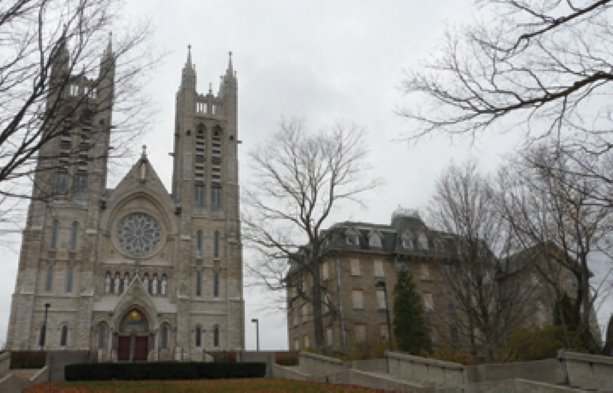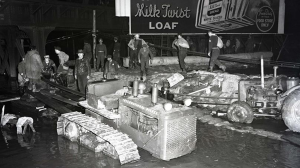Guelph’s civic museum is preparing to move into a new home — but one that is 156 years old.
Guelph’s civic museum is preparing to move into a new home — but one that is 156 years old. Museum curator Bev Dietrich considers it new however, because the museum is vacating a building that is 163 years old.
In 2011, the museum will relocate to the refurbished Loretto Convent that has loomed over Guelph since 1854 from a high hill in the city’s core.
Harbridge & Cross Ltd., a Concord,Ont.-based general contractor, has won a $10.5 million contract to restore the abandoned limestone convent, built in 1856. It’s been empty since 1996 and stands next door to Church of Our Lady, a National Historic Site and one of Ontario’s most architecturally significant churches.
Vandalism and the weather have taken a toll on the building since the nuns moved out.
It’s one of the oldest buildings in Guelph and when the Catholic Diocese of Hamilton proposed to demolish the convent there was a public uproar. Instead, the diocese gave Guelph a long-term lease on the four-storey building that was the city’s first school.
The convent and the huge church with its twin towers dominate the image of downtown Guelph, famous for its limestone structures. They stand on Catholic Hill, the highest site in the city core donated in 1827 by Guelph’s founder, explorer John Galt to Kingston’s Bishop Alex Macdonell
It was Galt’s way of saying thanks to Macdonell for helping his Canada Company gain large land grants from the British crown.
Additions were built on the convent to grow it into Bishop Macdonell High School, which was torn down in 2004 after a new high school of the same name opened on the city’s southern boundary.
Hamilton diocese required any new use of the refurbished convent be compatible with pastoral and sacramental activities at Church of Our Lady; the most visited tourist attraction in the city.
That restriction eliminated suggestions of preserving the convent as an art gallery. However, the museum’s two-storey limestone building on Waterloo Avenue where the museum has operated for 30 years, may become a new art centre for Guelph.
The federal and provincial governments are contributing $6 million towards restoring the convent and Ottawa is offering an additional $500,000 if Guelph finds an appropriate public use for the current museum building, which was built only 20 years after Galt cut down the first tree on the banks of the Speed River to create the community of Guelph.
Harbridge & Cross will gut the interior of the convent, which had been segmented into a variety of small rooms and add a glass canopied entrance.
Guelph’s museum has more than 30,000 artifacts, many of them in storage in the basement due to a shortage of display space. The convent’s 26,000 square feet is than double the museum’s current space.
More than $2 million was cut from the original restoration plans, mostly exterior landscaping, to meet the city’s budget. The city will conduct a public donation campaign to finance landscaping of Catholic Hill.











Recent Comments
comments for this post are closed